#CSICOP
Explore tagged Tumblr posts
Text
The Devil in the Details: Anton LaVey, CSICOP and Pseudo Science
In the latest episode of his podcast The Devil in the Details, Warlock Sword, the Satanic Skeptic, dives into a long out-of-print essay of Anton LaVey’s, “Backlash”, and examines LaVey’s opinions of pseudoscience and the Committee for Skeptical Inquiry. Spotify / Apple Podcasts

View On WordPress
8 notes
·
View notes
Text
The soldier saved from Christianity by the strip club owner - Part 2 of 3...
Dave Hughes continues his story (which started HERE) of his association with future Canadian cultural icon Don Cullen and the Le Strip ‘burlesque’ club in Toronto in the 1980s and 1990s… Dave Hughes – soldier The armored car job plus the part time job I had working for a former police colleague in the alarm system business just wasn’t enough. And so, I became the ‘relief’ cashier at Le Strip. I…

View On WordPress
#African Genesis#Canada#CSICOP#Dave Hughes#Don Cullen#Dr Robert Buckman#Elaine Pagels#Eupraxsophy#Herbert Armstrong#Humanism#Le Strip#Paul Kurtz#philosophy#religion#Rhodesia#Rhodesian Bush War#Robert Ardrey#Skepticism#The Plain Truth#Toronto
1 note
·
View note
Text
Il Committee for the Scientific Investigation of Claims of the Paranormal (CSICOP), fondato nel 1976 da Paul Kurtz, mirava a valutare criticamente le affermazioni paranormali attraverso l'indagine scientifica; si è evoluto nel Committee for Skeptical Inquiry (CSI) nel 2006, come parte del Center for Inquiry.
Le iniziative del CSICOP includevano la pubblicazione della rivista Skeptical Inquirer e l'organizzazione di conferenze per promuovere lo scetticismo scientifico e il pensiero critico sulle affermazioni straordinarie; tra i membri degni di nota figuravano Carl Sagan, Richard Dawkins e James Randi.
Lo CSICOP ha indagato su casi degni di nota:
le affermazioni di Uri Geller, smascherando i suoi trucchi
presentò denuncia contro la NBC per aver trasmesso un programma sulla chirurgia psichica, mettendo a repentaglio la salute pubblica
ha condotto indagini sulle affermazioni relative all'incidente UFO del 1947 a Roswell, nel New Mexico, che hanno messo in discussione l'autenticità dei presunti incontri extraterrestri
#Committee for the Scientific Investigation of Claims of the Paranormal (CSICOP)#Paul Kurtz#Skeptical Inquirer#scetticismo scientifico#pensiero critico#Carl Sagan#james randi#richard dawkins
0 notes
Text

The Enfield Poltergeist
On a quiet street in Enfield, London, a seemingly ordinary house became the center of one of the most perplexing and debated paranormal events of the 20th century. Known as the Enfield Poltergeist, the bizarre occurrences between 1977 and 1979 at 284 Green Street involved claims of supernatural activity that left investigators and skeptics deeply divided.
The strange events began in August 1977 when Peggy Hodgson, a single mother of four, reported that her daughters Janet, 11, and Margaret, 13, had witnessed furniture moving on its own and heard unexplained knocking sounds on the walls. As the days passed, the activity escalated, with reports of disembodied voices, loud crashes, and even levitation. Over the next 18 months, more than 30 people, including neighbors, journalists, and paranormal investigators, claimed to have witnessed these phenomena.
The investigation into the Enfield Poltergeist was led by Maurice Grosse and Guy Lyon Playfair from the Society for Psychical Research (SPR). Grosse and Playfair spent extended periods at the house, documenting various occurrences. They reported strange whistling, barking noises, and objects being thrown across rooms. A particularly disturbing aspect was the emergence of a deep, gravelly voice, which seemed to emanate from young Janet. This voice identified itself as "Bill," a deceased former resident of the house. Despite their conviction that some of the activity was genuine, Grosse and Playfair were aware that the girls might be fabricating certain events. They caught Janet on video attempting to bend spoons and admitted that she had faked some of the incidents.
Skepticism was rampant, with critics arguing that the entire case was an elaborate hoax. Members of the Committee for the Scientific Investigation of Claims of the Paranormal (CSICOP) and other investigators pointed out inconsistencies in the evidence. Stage magicians and ventriloquists suggested that the so-called "poltergeist voice" was nothing more than vocal trickery by Janet, and photos of her levitating were dismissed as her simply jumping off the bed. A remote-controlled camera set up by one investigator appeared to capture Janet faking the activity when she thought she was unobserved.
Despite the controversies, the Enfield Poltergeist case left a lasting impact on the field of paranormal investigation. It became a focal point for debates between believers in the supernatural and skeptics, highlighting the challenges of distinguishing between genuine phenomena and human deception. The case was widely covered in the media, inspiring books, documentaries, and the 2016 horror film *The Conjuring 2*. To this day, the Enfield Poltergeist remains a compelling and controversial chapter in the history of paranormal research.
6 notes
·
View notes
Text
i have been very careful to talk about a decline in 'anti-woo'.
What is unusual about the current woo phase, unlike previous ones in the 20th century, is that there *is* no anti-woo phase going along with it.
Alongside the Spiritualists were Houdiniites. Alongside the hippies were CSICOP. Alongside Geller, was Sagan. And alongside the Bush-era enthusiasts, of course, were the New Atheists.
I would say that the 20th century had people with very strong opinions either pro- or anti- woo. I would very much not say that the 20th century was, as a whole, anti-woo.
What is notable about the current spirit is that there is no anti-woo: there is, certainly, enthusiasm for woo, and there is an alternative neutral attitude socially permitted of maintaining a safe distance from it and being "not interested". Any actual anti-woo sentiment is shamed, belonging to a dated, adolescent, politically-incorrect "new atheist/fedora" sensibilitity.
This was already the case in 2019, but the late plague made it worse, in that belief in "medical science" became a social, political and psychological imperative. The controversy in 2020--2022 was not "woo" v "anti-woo" but "Democratic medicine" v "Republican medicine" (I employ the American terms with care since, as the whole West went online, these kinds of medicine became understood as coherent options) in which both sides recognised that woo was a tool to be employed, in frightening people, lying about the effectiveness of interventions to get people to submit to treatment, all kinds of dressing up, having journalists write nonsense, promoting superstitious practices, "nudging", making up evidence etc. etc. i do not have to remind you of the past three years.
being "anti-woo" in a fully general sense would put you against both Democratic and Republican medicine, which is as much as saying that "anti-woo" is an extremely marginal position.

This community note on the platform formerly known as Twitter is a noteworthy example of the dire state of anti-woo.
This note is going to get policed by polite people as being written by the ghost of a fedora atheist (derogatory) (indeed, the epithet attached by the person who brought it to my attention was "new atheist reddit tier shit") and is therefore ludicrous.
I note first that aalewis' famous quote is from 2013, a time when even *atheism*, let alone "scepticism" was on the downswing, hence aalewis' otherwise unremarkable quote taking off both within and further fuelling the reaction. That was almost 10 years ago.

Here's a Google trends graph of the colocation "fedora atheist'. The step is in 2012. The "fedora atheist" as an unmemed "authentic" phenomenon - if there ever was one - is essentially a late 2000s figure, becoming a *memed* folk devil in the early 2010s.
This folk devil, ten years on, can still be evoked in the face of a very minor anti-woo reaction like the above.
But this response is *itself* compromised in a way no actual fedora wearing skeptic speaking about alternative medicine before (idk where to date the beginning of this wave) would be.
The response objects, up front, to the characterisation of these modalities as "traditional" on the grounds they are modern inventions.
This is no good -- anyone who has read the book titles of Eric Hobsbawm knows that traditions can date from any time, so it's a bad argument.
The argument the anons writing it *really* want to make is the one they offer halfheartedly -- that those modalities are *unscientific* -- that they are "pseudoscience" --, and that scientific authorities like the WHO should not be promoting them.
But they can't -- the spirit of the times is so anti-anti-woo that you get the above which, read literally, suggests that what makes something a pseudoscience is that it was developed parallel to a science. And makes no argument that the UN should not be promoting it -- that is purely implicit.
124 notes
·
View notes
Photo

RIP James “The Amazing” Randi, 1928-2020 (seen here on Scholastic’s Dynamite #90, November 1981)
#James Randi#The Amazing Randi#1980s#skepticism#Dynamite magazine#Dynamite#in memoriam#CSICOP#CFI#CSI#Amazing Randi
423 notes
·
View notes
Text
Most of the online population window-shops Wikipedia for their information, but if you happen to be interested in psi (or any anomalous phenomena), its accounting of facts and history can be outrageously selective revisionism. The entries would be laughable if their writers weren’t so blatantly dishonest.
Anyone who’s spent time researching psi on Wikipedia can discern in seconds the editors’ bias in favor of anydebunking explanation. Look up pretty much any paranormal subject and you’ll find the same pattern: an insultingly cursory outline of the anomaly, followed by sometimes ludicrous “explanations” that demonstrate the editor(s) did virtually no work in investigating the original reports and probably nutshelled what little information is presented only from books written by pseudoskeptics—who themselves have cherry-picked aspects of the cases to bolster their perspective.
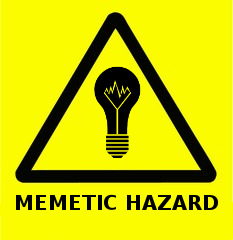
The trashing of a particular phenomenon or character assassination of a psi-talented individual very often revolves around a core of “celebrity” debunkers associated with the Committee for Skeptical Investigation (CSI)[1] such as Joe Nickell, Martin Gardner, Susan Blackmore, Elizabeth Loftus, James Alcock, and Paul Kurtz. When an appeal to authority is needed, there will often be offered a quote from superstars Carl Sagan (despite Sagan’s professed openness to investigating telepathy and reincarnation), Michael Shermer, Alcock, or the “Amazing” Randi to snark upon the poor, “deluded,” and long-dead psi researchers of yestercentury and today.
Of these debunking sources, only a few are genuine scientists—and even a fewer number than that are still active in CSI. Bill Nye isn’t a scientist. The Amusing Randi isn’t a scientist. In fact, in the early years a group of “hard” scientist members bailed on the organization because of its dogmatic, anti-scientific attitude.[2]
Meanwhile, the number of academically credentialed paranormal investigators increases by the day.
In addressing the thousands of psi studies and the meta-analyses of these studies, references to “methodological faults” come up quite often—conveniently footnoted to articles by Joe Nickell, Martin Gardner, James Alcock, or even the non-scientist Randi. How wide-ranging in sources! As Craig Weiler points out:
“Since alternative sciences are mostly shut out from mainstream consideration, the evidence isn’t examined closely in many mainstream scientific discussions. In other words, there are very, very few solid scientific sources for skeptics to work with. There are no sources that sufficiently support statements about parapsychology or many other frontier science such as “this is pseudoscience” “rejected by the scientific community” or “negatively impacts the public understanding of science.” No one has ever gone to the trouble to try to prove these things scientifically. And it’s very doubtful that it’s even possible.
So skeptics have to resort a lot of the time to sources that are created “in house” so to speak. These come in the form of skeptics being interviewed, skeptical articles, newsletters, blogs by notable skeptics, etc. This is especially true on Wikipedia when it comes to psychics. It is very tough to make the case that any of them are frauds or deluded without resorting to opinion or (the failure of James Randi Foundation’s) Million Dollar Challenge. (To award a psychic for genuine psi abilities). Mainstream sources generally stay away from landing on one side or the other of this debate because of either liability issues or fear of losing audience by being too skeptical.
This is undoubtedly why the Guerrilla Skeptics work so closely with CSI and JREF. Without the sourcing from these two reactionary organizations or their fellows and other skeptical organizations, many of their assertions would be just about impossible to make.”
Further, the rebuttals by the original psi investigators to these criticisms—who often clearly enumerate the mistakes, mischaracterizations, or outright falsehoods made by these pseudoskeptics—are never mentioned in the Wikipedia entries.
The use of this small core debunking crowd as final authorities is akin to having the Wikipedia entries for Impressionist movement and artists referencing a core of ten or so Impressionist-hating critics, when there in fact have been thousands of art critics.
Again, the references and “further reading” sections at the articles’ ends rarely contain the primary references/reports on the phenomena or the work of paranormal researchers. It’s inevitably debunking books or articles you’ll find…Almost as if they want to short-circuit your interest; as if they don’t want you to do independent research and make up your own mind.
Thus, Rule 1: Try to avoid reference primary sources, that is, the lengthy investigations by the persons who initially researched and often witnessed the anomalous activity. Always reference only the debunking material, or the opinion of some member of CSI. You’ll know this is so if the book referenced is published by Prometheus Books, the house organ of CSI.[3]
I don’t have any problem with giving skeptical, non-paranormal explanations the primary place in an article—if the explanations offered were honest and credible in the mechanical-physical specifics of their explanations—but Wikipedia entries don’t exhibit this equality, because the debunkers’ explanations usually don’t.
That’s because there is a “mafia” of pseudoskeptics controlling the editing process of Wikipedia entries on anything paranormal. CSI and Guerrilla Skeptics have pages devoted to how one should debunk anything they deem “non-science,” both in real life and in online contexts.[4]
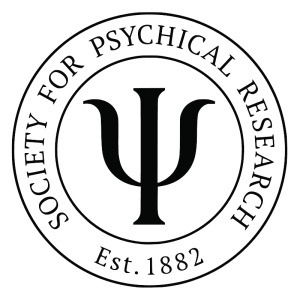
First, the “RationalWiki” (the pseudoskeptic’s safe space) entry covering the Society for Psychical Research is a shambles. The Guerilla Skeptics unfairly downplays the first generation of SPR. Richard Hodgson, Edmund Gurney, Henry and Nora Sidgwick, Frank Podmore, and (on the American side) William James all busted dozens upon dozens of fraudulent mediums. Hodgson exposed Theosophy founder Madame Blavatsky of several types of imposture in 1885. Podmore worked on collating the accounts contained in Hodgson and Myers’s massive Phantasms of the Living (1886) yet himself remained unconvinced of mediumship and postmortem survival (he concluded telepathy was probably responsible for mediums’ “hits”). But Podmore didn’t stop trying to find the evidence. William James revealed many spiritualist seances as conjuring feats (which alienated the original Spiritualist contingent within the ASPR into rejecting that organization, ironically, as a bunch of debunkers). The wiki entry doesn’t mention the SPR’s in-depth and failed attempts to disprove the mediumship of Leonora Piper.
Yet the Guerillas reveal little to none of these facts in their trite account—because these Victorian searchers professed and applied what the mafia don’t practice: a skeptical yet open-minded commitment to discovering the truth. Truth cannot be “absolutely settled” in science—that is what makes it unique in human intellectual history. As William James said, “Science means, first of all, a certain dispassionate method. To suppose that it means a certain set of results that one should pin one’s faith upon and hug forever is sadly to mistake its genius and degrade the scientific body to the status of a cult.”
This is the deeper truth about the role of science the Guerilla Skeptics cannot bear to face, but was foundational to the SPR pioneers, because the latter were philosophers and philologists and lawyers unburdened with a worship of a materialism that can be as corrosively dogmatic as Baptist literalism.

Next, take the subject of poltergeists. The Wiki mafia editors are very selective as to which cases to debunk by granting them a dedicated page. The Amityville, Enfield, and Borley Rectory cases get the longest Wiki pages by far—and they were deemed fraudulent by investigators from the Society for Psychical Research as well as the committed debunkers.[5]On the SPR’s investigation of poltergeists, the wiki prominently mentions Lambert’s discredited hypothesis that the phenomenon was caused wholesale by underground seismic or liquid vibrations and weather factors. This conjecture was soundly disproven by the SPR’s Alan Gauld and Tony Cornell.[6] Is Gauld and Cornell’s scientific experimentation to prove or disprove Lambert’s hypothesis even mentioned? No.
The Wiki entry for the well-documented 1967 Rosenheim poltergeist is a particularly decrepit specimen of attempted ledgermain. There are no mentions of the 1967 Tropication Arts poltergeist in Miami (exhaustively investigated as it occurred by Roll and Pratt), the Stratford, Connecticut poltergeist of 1850 (witnessed by thousands of persons over seven months, detailed in diary form by Rev. Eliakim Phelps, owner of the house, and investigated by skeptical scientists, journalists, and clergy who came away convinced the phenomenon was paranormal), or the Sauchie, Scotland poltergeist of 1960 (investigated by A.R. Owen and witnessed by a clergyman, three medical doctors, and a teacher). These three cases are conspicuous absences in the Wiki data, due either to their impeccable documentation or, relatedly, the fact that no close to credible debunking explanations exist by the “experts.”
Rule 2: Always highly emphasize the crudely-produced frauds, then tar the entire phenomenon with these selected instances—and try not to use the debunking work of genuine skeptics who busted the frauds, such as SPR investigators Frank Podmore, Henry Sidgwick, William James, Nora Sidgwick, Alan Gauld, Richard Hodgson, or E. J. Dingwall. Mentioning their work only gives them respectability, and no dispassionate psi investigator should ever be tolerated in a Wikipedia article on the subject.
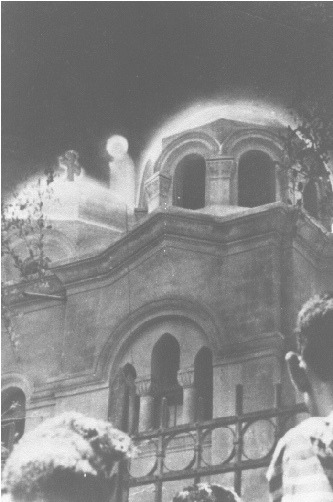
The 1967 Zeitoun, Egypt Marian apparition entry is apparently a fluke in that the descriptive entry about it is surprisingly longer and more detailed than the “mass hysteria” explanation made by the skeptics further down the page (meaning: we have no idea how so many people could see and even photographed repeatedly an identical apparition, therefore here’s an unproved accounting for it)…Which brings us to the core of their mindset: they often suggest “natural” explanations that beggar belief in their convoluted, pseudoscientific chutzpah.
According to these “rational” authorities, multiple witnesses to apparitions like Zeitoun can be primed to suffer simultaneous and identical hallucinations of Mother Mary, levitating bedsheets, candlesticks, and even phantom people, the lack of scientific/psychological evidence for “group hallucinations” be damned…The mafia would prefer us to believe women mediums merely fake trances during which they surreptitiously manipulate unseen but necessarily present “concealed ropes” that can pull 50-pound bureaus a foot and a half across the floor and back again in seconds…And did you know that 10-year-olds can easily fool professional magicians and a dozen trained observers during a poltergeist outbreak? And that these kids obviously place dozens of stones into their houses’ walls to disgorge themselves by means of invisible networks of threads (that are never found)—and then float across rooms and land with no contact sound?
These are remarkable feats for untrained, pre-adolescent conjurers—many of whom had never actually seen a stage magic act in their life.
Rule 3: Use anything within the realms of standard, cause-and-effect Newtonian physics, psychology, cognitive science, or sociology, even if unproven, obsolete, or just plain pseudoscience (like “mass hysteria”), to explain away the phenomenon in an ad hoc manner.
We’ll take a look at mediums. The Wiki editors’ bias is most easily demonstrated by the amount of page space given over to the rationalizations which always outweigh the compressed anecdotes on the mediums’ feats (the latter which, a curious individual’s further scrutiny will find, are told through often highly detailed accounts that what was experienced clearly violates physics as we know it).
Again, the entries for individual mediums such as Leonora Piper all consist of very short summaries (or outright omission) of the prodigious examples of their talents and the laborious screening-out processes for fraud undertaken by investigators. The debunking “explanations” amount to a hand-wave mention of “conjuring tricks” and one of two instances of witnessed fraud meant to negate the psi they exhibited.
A jury would inevitably find the grounds of these debunkings as weak hearsay compared to the oft-mountains of evidence in favor of the abilities’ existence. Thus
Rule 4: Always refer to case studies as sets of anecdotes or anecdotal. This is supposed to insulate them entirely from consideration as evidence, and it applies doubly to case studies of the careers of individual psychics or trance mediums; in this case, one can then proceed to Wikifraud! them further and attack the person as a charlatan. As in Rule 2, if one instance of anything ambiguously fraudulent is found in a medium’s career—in other words, an anecdote of fraud—raise this one anecdote to the status of unimpeachable truth and tar the person’s entire career with fraud, despite any contrary evidence from investigators and reliable witnesses. This is an example of the double-standard fallacy many pseudoskeptics use. Fraud discovered=true fact; Psi demonstration that is far beyond what chance would predict= “non-evidential.”
SHORT CUTS:

Lourdes: In 1858, 14 year-old Bernadette Soubirous spoke with a “white lady” at an ancient grotto in southern France. The apparition told her to dig in the ground near the cave and Bernadette did, causing a spring to appear whose waters have become a potable shrine to millions. Both the Vatican and independent medical authorities have verified 69 medically inexplicable healings.
The Wiki response: the placebo effect, natch…But have the debunkers any clue how an idea or a suggestion in the mind can induce the near-instantaneous healing of fractured bones, cancer-eaten tissue, or blindness (all medically documented)? Nope. No one does. Move along. It seems the editor stopped short. The less said about this one the better.
vicka 011.jpg The six young visionaries having an apparition in 1981 L to R: Vicka Ivankovic, Jakov Colo, Mirjana Dragicevic, Ivanka Ivankovic, Marija Pavolic, Ivan Dragicevic Medjugorje Early apparition Chris Rogers Mobile:+447808913186 Skype: chris.johnrogers http://www.blackandwhitetv.net
Fátima & Medjugorje: Well, there are no Guerilla Skeptic interpolations in the Fatima entry at all—no section on possible alternate explanations, nothing but a sentence offering possible “retinal effects” due to looking at the sky near the sun, natural meteorological optical effects, or the “suggestibility” of the huge (30-50,000) crowd during the “Miracle of the Sun” on October 13, 1917. Apparently, even a Guerilla Skeptic doesn’t (or rather, isn’t allowed to) mess with canonical Catholic beliefs.
The papal blessing on Fatiman Lucia Santos as a saint and the authentication of the mass visions probably explains the different treatment the mafia offers in the Medjugorje entry (and the fact that it occurred 51 years closer to the present, 1971, when we should know better about these things, right?). The Medjugorje visions were never given Roman official seal of authenticity, nor were the young women involved ever canonized. Open season, then! In the skeptic section, there are two references by Joe Nickell, one to a CSI’s Skeptical Inquirer magazine article, and a skeptical weighing-in by Pope Francis.
The difference in treatment between the Fatima and Medjugorje events is striking. One wonders if the mafia would have been given a hands-off if the Bosnian events had been recognized as genuine and the primary “seers” beatified or even canonized.

Padre Pio: Like Saint Lucia Santos, Saint Pio of Pietrelcina has been canonized, so there’s minimal interference by the mafia. As far as the accounts of his stigmata go: The skeptic attempt to use an ad hoc that Pio bought carbolic acid to fake the wounds is immediately countered by the admission that Pio and his monastery brother Paolinopurchased the chemical to sterilize needles for Spanish Flu immunizations. No evidence at all is offered that the stigmata could have been caused by the acid.
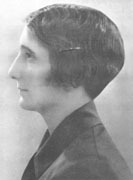
Geraldine Cummins: The entry on automatic writing medium Geraldine Cummins actually quotes psychical researcher Harry Price, of all people, as debunking her voluminous writings as “products of her subconscious.” Now go over to Wikipedia’s Harry Price page to see how his character and career fare as a whole in the mafia’s eyes; they do not note the many times he credulously boosted his “star” psychics. The man was very protective of his test subjects. Using Price’s opinion of Cummins in the entry is blatant cherry-picking, in other words. Cummins herself is on record as being skeptical of her own channeling’s sources, which is in fact mentioned in passing in the “reception” entry. Then go to other sources on Harry Price’s career as a psi researcher and you’ll find a firm believer in the anomalous abilities, but only when it suited him. He was, if nothing else, a promoter for the abilities of Harry Price.
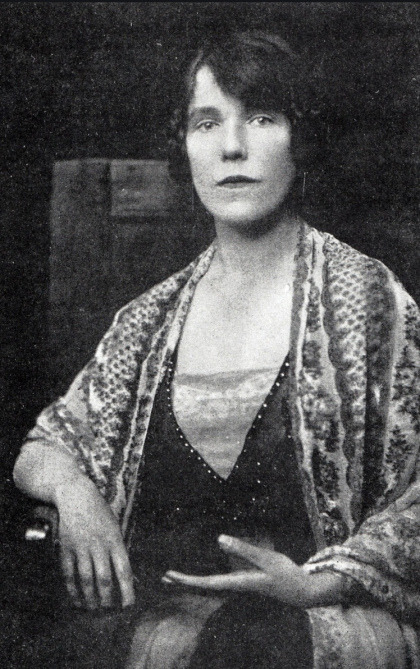
Gladys Osborne Leonard: The Gladys Osborne Leonard entry goes into no detail whatsoever about the many spontaneous “hits” the trance medium Leonard/her control “Feda” made that neither Leonard nor her sitters could possibly have known—because they were proxy sitters two (or sometimes three) times removed from the actual questioner.[7] How could Leonard have known who the real sitters’ identities were asking the questions? It would seem impossible, yet “Feda” was accurate in names, times, descriptions, and life-events of these thrice-removed sitters more than half the time. If fraud is ruled out (and on testimony of the SPR investigators, who had Leonard trailed by detectives, she was of impeccable character vouched for by all her friends) the only alternative for the mafia is telepathy or even super-psi—but they can never use those explanations, of course…So the mafia cites only attempts at explanation from skeptics wielding the usual techniques (fishing, cold reading, fraud). Explaining away “Feda” as a “second personality” of Leonard’s, as some of the referenced skeptics do, explains nothing, for this second personality apparently was either telepathically gifted or in fact a disincarnate intelligence.

Eileen Garrett: Trance medium Eileen Garrett was more curious about and flummoxed by the source of her abilities than perhaps any other medium, and tried for decades to understand it, enlisting psychologists, psychiatrists, and scientists. Of all people, the wiki entry on her clairvoyance uses the opinion of parapsychology’s worst fraud-perpetrator Samuel Soal to dismiss her ability to replicate J.B. Rhine’s experimental successes with him, Soal. Thus—
Rule 2b: anyone’s opinion is apparently permitted, as long as it debunks with extreme prejudice, and
Rule 2c: researchers who believe(d) in the existence one type of paranormal phenomena are occasionally 100% okay to use as sources of authority as long as they are debunking another paranormal phenomenon.
In the Garrett wiki writer’s case this is ironic, in that Soal was known to be deeply envious of Rhine’s experimental work and, when could not replicate his famous telepathy studies, Soal produced them fraudulently by altering score cards.
In 1930, Garrett was “spontaneously contacted” by the consciousness of Herbert Irwin, captain of the R101 airship that had crashed two days before, killing Irwin and 47 others.
CSI house organ Prometheus Books’ two authors John Booth and Melvin Harris both get ample quotes from their books explaining the results of her R101 sittings by not explaining them at all as fraudulent, trivial, non-evidential. No rebuttals by direct witnesses or other parapsychologists are permitted; the “final word” by Booth and Harris is she was a fraud.
DEEP DIVES:
I’m going to take four examples of Wikipedia’s blindered approach and look at them in-depth.
Stefan Ossowiecki
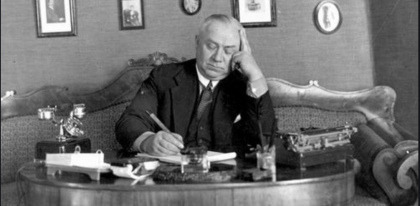
Polish industrialist and remote-viewer/psychometrist Stefan Ossowiecki was nationally famous in Europe for his ability to not only read multiply-sealed letters but often tell the investigator what occurred while the letter was written (the writer’s gender, age, appearance, health condition, describe the room or house where it was composed, etc.) His “hits” at reading the contents of envelopes far outweighed his misses, and there is no way short of “hot reading” (extensive detective work done on the target material beforehand) that he could have known about the writers’ lives—but in many cases neither Ossowiecki nor even the investigator knew they would be performing an experiment on the spur-of-the-moment. Many times, someone Ossowiecki did not know (a Parisian, say) who had written a letter that was given to someone else and then given at the last moment to the investigator to test him. How could he possibly have known what was written (or drawn) in the letter? He would then not only describe what was written or drawn inside, but spontaneously describe the writer. Furthermore, he several times told the investigator personal details about the writer and the people through whom the letter passed to his hand, who he also didn’t personally know, or even had an idea existed.
This led researchers Charles Richet, Gustav Geley, and Eugene Osty to conclude Ossowiecki was a not only a “superpsi”-level clairvoyant (remote viewer) but an astounding psychometrist: by touching the envelopes, he could see into the past and somehow watch the person write the note/drawing, and sense the scene.
For this one, the Wiki editors roll out psychologist C.E.M. Hansel for the inevitable “conjuring trick” claim with no further elaboration, then hit us with this: “Psychologist E. F. O’Doherty wrote that the clairvoyance experiments with Ossowiecki were not scientific.”[8] This is a strictly true criticism; but still, triple-blinded tests of the man’s ability while he is being closely watched by the experimenters for fraud (dozens upon dozens of times) makes for compelling anecdotes that he possessed an extraordinary talent.
The editors’ omission of the preparations the investigators made to test Ossowiecki is a refusal to wrestle with the details, as is usually the case in their entries. It serves to demonstrate their bedrock faiththat there is literally no possible test debunkers would call scientific with regard to psi abilities. Which is exactly their intended program: it doesn’t exist, simply because it can’t, therefore there is no way to test it.
Leonora Piper
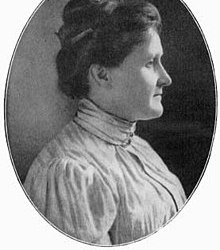
In the first stub, we have Mrs. Piper characterized as a cold reader, a fisher for information, and muscle reader. None of the authors cited for these statements sat with Leonora for a reading, nor did they interview any of the persons who did; it appears they simply came to the subject with these explanations based upon the SPR reports. With complete disingenuousness, it ignores the fact that A/SPR members William James, Richard Hodgson, Frederic Myers, James Hyslop, and Oliver Lodge conducted strenuous measures against cold reading, hot reading, and muscle reading. These trained philosophers and scientists weren’t stupid and gullible as the pseudoskeptics would like you to think. Richard Hodgson was so flummoxed by her abilities that he hired private detectives to secretly trail Mrs. Piper and her family for several months, watching them for meetings with “cut-outs” between their friends and the SPR who might be feeding her any information (the “hot reading”). They turned up absolutely no evidence of fraud, which impressed Hodgson and the other investigators. Over the years Hodgson continued to periodically monitor as closely as he could Piper’s social activities but again came up with no evidence at all for hot reading. They even paid for she and her daughters to travel to England for strenuous examination by the British SPR and use dozens of random strangers as sitters, where there was no possibility of her gaining a hot reading.
These facts go conveniently unmentioned anywhere in the article.
While it is true that Mrs. Piper often had the sitters hold her hands or place their hands against her forehead, which could open her to charges of muscle reading in gauging how close her answers were, the quality of double or triple-blinded information she on occasion gave—ostensibly evidential of either spirit communication or omniclairvoyance (superpsi)—would lead one to think that even if she did use muscle reading, it was irrelevant to her results, because the information would have to have been conveyed via unconscious telepathy by the sitters themselves to Mrs. Piper; even the sitters were often unaware of the information she provided, which was found later by them to be true.
This is a possibility the Wiki editors never consider. And she did fish, but the sitters were for the most part told to remain silent and poker-faced as her controls sought for names, dates, or concepts.
The biography section says she “made a fortune” from her readings. It doesn’t make clear that this money was paid to her by the SPR to keep her exclusively their subject, with an investigator and stenographer/note-taker present at every sitting. She was essentially a salaried test subject for some 15 years.
Two examples of Piper’s sittings amongst many serve to demonstrate what sort of inexplicable talent they found themselves compelled to explain:
For a period of several years, Mrs. Piper’s main “spirit control” was the coarse-speaking French physician “Phinuit.” A man named John Hart had a sitting with Leonora which was suddenly interrupted by the “spirit” of George Pellew, (GP), who was a recently deceased friend of Hodgson and Hart both whom Piper did not know about. GP successfully spelled out his name for the two surprised men (Hodgson sat in on the sessions most of the time). Pellew, speaking through Phinuit, described a specific pair of shoes he was wearing that had been originally given to Hart by Pellew’s parents (a true past event). This of course would count towards nothing but possible telepathy. GP then asked Hart to get in touch with Pellew’s friends Jim and Mary Howard to have a sitting with Mrs. Piper, and described a specific conversation on metaphysics he once had with the Howards’ 15 year-old daughter Katharine—another event that turned out to have occurred (but neither Hodgson nor Hart knew about at the time). GP mentioned a specific book he had failed to finish reading when he died which Hodgson knew to be true.
The Howards then came in for a sitting (pseudonymously, at Hodgson’s ever-skeptical insistence). This time GP communicated directly, bypassing Phinuit. GP corrected Jim Howard’s wayward assertion that a mutual friend (Rogers) was writing a novel by telling him that Rogers was actually working on a memorial to him, GP. This was correct. GP described Rogers’s deceased daughter as being nearby (that is, “on the other side”) as she still fretted over her condition during her final days, in which she had to be fed with a tube. GP then mentioned “Berwick” and “Orenberg,” more friends of the Howards. Mrs. Piper knew of none of these persons, and all the information and connections given were true.
At their next sitting the Howards brought their daughter Katharine. GP joked about her terrible violin playing, to which Mrs. Howard took offense but Katharine later clarified was a running joke between she and GP—his spirit was apparently attempting to establish “bona fides” with the teenager. Mrs. Piper passed out of trance then back in as Phinuit returned and carried on a conversation in French with Katharine, which the girl knew fluently from living in France. Mrs. Piper consciously knew no French.
The GP control apparently exhibited either remote viewing (clairvoyance) or “retroactive” telepathy on one occasion. With the Howards at home, Hodgson asked GP to visit their house and give a report on what he perceived. Mrs. Howard was writing letters to GP’s mother and someone named Tyson. GP also perceived her holding one of his own books as she wondered if his spirit were around her at that moment. When Hodgson checked with Mrs. Howard he discovered that the events as seen were true but had occurred on the previous day. Hodgson conjectured that Mrs. Piper was either retroactively remote viewed the past or telepathically accessed Mrs. Howard’s mind in real time as she thought of the previous day’s activities. Either way, this is a possible astounding feat of superpsi.[9]
Next, Sir Oliver Lodge wanted to eliminate the possibility of telepathy in Piper’s sittings. So he in effect double-blinded himself by means of an object gotten from an elderly uncle he with whom he was not close. It was a gold watch owned originally by the uncle’s twin brother, who had died decades ago. Lodge handed it to Mrs. Piper, whose control immediately declared it was once owned by the physicist’s uncle. The control, Phinuit, said that this uncle was very fond of another uncle whose name was Robert—another hit; it was true, the living uncle’s name was Robert. Her voice then changed from Phinuit’s to the dead twin, who called himself Jerry (third hit).
Lodge then asked for something only Jerry and Robert would know between them. Phinuit spoke of the two nearly drowning in a dangerous creek while young, killing a cat in “Smith’s field” with a rifle, and that Jerry treasured a “skin” that he’d found. Robert, it turned out, still possessed his brother’s beloved snakeskin, and they did swim in a perilous creek.
This wasn’t enough for Lodge, so he wrote to his younger uncle asking for any memories involving a creek and a cat in the twins’ youth. The third uncle recalled it all: the dangerous creek and the poor cat they shot in the field. They were so mortified of their behavior they’d all kept it secret, but it got out, to their shame.
Despite the true statements around the pocket watch—handed to Piper with no contextual information at all about it—Lodge still insisted on sending detectives to the town where his three uncles grew up to find out if recent enquiries had been made about the family. The detectives reported back: no, and not even any evidence that the shameful activities of the brothers long ago had been documented in public records in any way.[10]
These are two examples of Piper’s mediumship, and there several more of equal power, which we need not go into—and the Guerilla Skeptics would really prefer you didn’t. You might catch curiosity that there’s something to these strange things.
The Wiki entry on Piper emphasizes repeatedly the disagreements between members of the A/SPR over the nature of her talent, as if their clashes in toto negate her authenticity, when in fact James, Hyslop, and even skeptic Frank Podmore simply favored a belief that it was due to telepathy—but even this professional consensus on a paranormal explanation is a no-no that the Wikivigilantes cannot dare mention.
Out of thousands of quotes that could’ve be chosen to characterize the ever-cautious Hodgson’s strenuous work with Piper, we are offered Morton Prince’s observation that her mediumship “wrecked his mind” after Hodgson began to favor the spirit hypothesis over telepathy. In the editors’ selective reading, Frank Podmore is said to have concluded that “Hyslop’s séance sittings with Piper ‘do not obviously call for any supernormal explanation’ and ‘I cannot point to a single instance in which a precise and unambiguous piece of information has been furnished of a kind which could not have proceeded from the medium’s own mind, working upon the materials provided and the hints let drop by the sitter.’”[11]
Podmore’s is an incredibly poor assessment of the evidence, as the Howards and Lodge episodes above reveal; both sittings exhibited precise and unambiguous pieces of information that could not have proceeded only from Mrs. Piper’s mind. According to Ghost Hunters author Deborah Blum, Podmore concluded that “…Leonora Piper was a woman with some telepathic skills and an excellent memory for facts shared casually by her sitters. He had no proof of the latter…but her overall record, although impressive, failed to convince…Perhaps this was too cynical, Podmore allowed: ‘The accurate appreciation of evidence of this kind is almost an impossible task,’ (Podmore) wrote in his book Modern Spiritualism. ‘Mrs. Piper would be a much more convincing apparition if she could have come to us out of the blue, instead of trailing behind her a nebulous ancestry of magnetic somnambules, witchridden children, and ecstatic nuns.’[12] (emphasis added)
To be clear: There was no proof at all for her possessing “an excellent memory for facts shared by her sitters” that in turn fooled investigators. This says it all as far as using Podmore as a credible source on Leonora Piper. Again, the Guerilla squad makes no mention of his ambivalent conclusion on telepathy. And his lumping her together with the hundreds of fraudulent “show” mediums is insulting.
After a cherry-picked tally of her failures and sprinklings of dismissive evaluations in her bio and career, were given a lengthy “skeptical reception” section. As if it were needed.
Few of her many hundreds of “hits” are mentioned. When Piper accurately described the recently deceased daughter of a Reverend Sutton to he and his wife during an 1893 sitting, then gave her cause of death, her nickname and the nicknames of the girl’s brother and sister, “ John G. Taylor suggested that the information Piper gave could naturally be explained if she had read an obituary notice in the local newspaper. Taylor also suggested Piper may have picked up clues from the sitters about the girl’s nickname.” (emphasis added)
Read that closely again. There is no proof here, just “what ifs,” nor any evidence of how Piper could have gleaned clues from the grieving Suttons to declare specific information.
Her “miss” rate was openly acknowledged by James, Hodgson, Hyslop, and others as a problem. The nuanced (yet unfalsifiable) explanation for this is that a person in trance would have difficulty gaining any instantly coherent information from a “widened” or “higher” source while in an unconscious state. As Piper’s own controls explained the problem, the deceased individual to whom the sitter wishes to speak sometimes has to have their own control “on the other side,” and it becomes extremely difficult to convey information across three barriers to the living.
This gross equivocation, even if it were entirely false, still doesn’t explain her consistent hit rate. Podmore and James tended to believe Mrs. Piper had very strong secondary personalities, but as James and Myers would point out, these personalities, emanations of the Subliminal Self as Myers called it, can do impossible things.
DANIEL DUNGLAS HOME
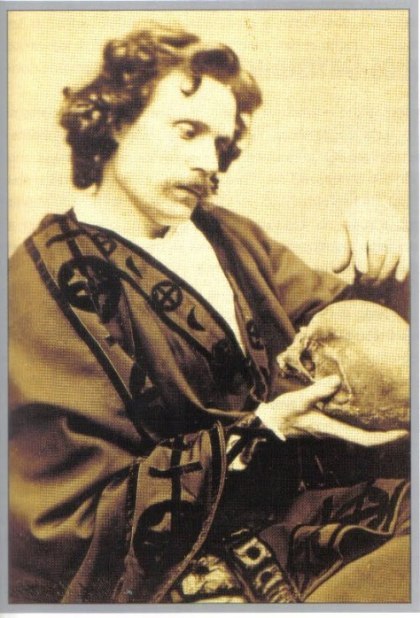
Home gets much Wiki debunkery upside his head simply because his feats were witnessed by many hundreds of people, including scientists, skeptics, and heads of state and, it’s been claimed, that “every attempt to bust him as a fraud failed.” No soup for you.
Quote from the page:
Gordon Stein has noted that “While the statement that Home was never caught in fraud has been made many times, it simply is not true… It is simply that Home was never publicly exposed in fraud. Privately, he was caught in fraud several times. In addition, there are natural explanations both possible and likely for each of his phenomena.”
Does the page give specific examples of Home being busted by any individuals? Nope. Here, Michael Prescott goes into James Randi’s attempted dismissal of Home with regard to Sir William Crookes’s thorough investigations of him, and Randi’s devious (yes, devious) “revisions”:
https://michaelprescott.typepad.com/michael_prescotts_blog/2015/10/blast-from-the-past-under-the-table.html
The Wikibunkers explain away the most spectacular Home levitation, wherein he allegedly floated out a three-story window and back in another, as their wide brush to tar his other levitations.
And their story goes like this: the feat was done in near-darkness, and Home could have been standing on those four-inch ledges outside the window…Therefore he did stand on those ledges. Nothing more to it! Here’s another gem:
“Science historian Sherrie Lynne Lyons has stated that a possible explanation for Home’s alleged levitation phenomena was revealed in the twentieth century by Clarence E. Willard (1882–1962). Willard revealed his technique in 1958 to members of the Society of American Magicians. He demonstrated how he could add two inches to his height by stretching. According to Lyons “it is quite likely that [Home] used a similar technique to the one that Willard used decades later.”
Two inches? One problem with that: Home was witnessed levitating three to five feet off the ground during his trips, by at least a dozen people.
And again: “Historian Simon During has suggested the levitation of Home was a magic trick, influenced by Robert-Houdin.”
Do they take the time going into During’s specific details (if he even had them) of exactly how this was accomplished by Home or Robert-Houdin?
Nope. Didn’t think he would. It’s a trade secret. And Houdini never replicated any of Home’s feats.
INDRIDI INDRIDASON
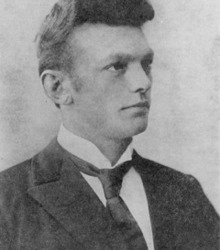
So weak. Perhaps the lamest debunking attempt of all Wikiskeptic antics.
Prior to Indridason, a “simple farm boy,” there were no spiritualists let alone physical mediums in Iceland.[13] The 22-year-old happened to be asked to sit in on a séance in early 1905 and immediately produced tremors and rattling in the table before which they sat. It is noted that Indridi had never before seen a conjuring act, which were extremely rare in the country.[14]
The first psychical research society in Iceland was set up in 1905 to study Indridason and kept him on retainer, much like the SPR paid Leonora Piper as a subject for 17 years. Most of his manifestations occurred while he was in a trance. They included multiple direct voices, wind gusts, instrument playing, the levitation of objects and the medium himself, light phenomena of various types, materialization, rappings, and, most bizarrely, the dematerialization of his arm. These events were witnessed at times by upwards of 80 persons in the “experimental house” space, specially constructed by the psychical society, in which he lived from 1906 to 1909.[15] In this space, Indridason was usually held by investigators or strapped down in a chair that sat behind a wire mesh-barrier that could be examined for signs of tampering during his sessions. Some of these manifestations took place in plain light.
Indridason’s primary control, at first, was his paternal grand-uncle Konrad Gislason. While in trance he was repeatedly tested with needle pokes to no reaction, as if in a depicted hypnotic state. In November 1905, four persons testified that tables levitated as high as 7 feet several times during Indridi’s trance. All attempts to pull them down failed. It also occurred spontaneously while he was in a full waking state. A seance on November 24, 1905 was interrupted at roughly 9pm by a personality named “Emil Jensen,” a “manufacturer,” who spoke of a fire burning at that moment in a Copenhagen factory. It was brought under control within an hour. Three accounts of this particular séance were written down, one of them immediate, but many more people were present.[16]
The next issues of the leading Danish newspaper Politiken were delivered to the island four weeks later, at Christmas, 1905, and “Jensen’s” declarations had been true: a large fire at a lamp and chandelier factory in Copenhagen had occurred on the late night of November 24. Of the four fires that had occurred in Copenhagen within a month’s period, this was the only to befall a factory. There were no telephones or even telegraph service between Iceland and Denmark. In 2009, researcher Erlendur Haraldsson searched Copenhagen’s city records and found a manufacturer and coffee merchant Thomas Emil Jensen who had lived two doors down from the burnt lamp factory and had died at 50 in 1898; on further research it was discovered that the man had lived his entire life within two blocks of the site of the fire.[17]
In December 1907 to early 1908, an interloping spirit named Jon Einarsson caused very destructive poltergeist activity while Indridi was both in and out of trance, but was pacified somehow by a group of “ministering” spirits who insulated Indridi from Jon’s anger by anointing the medium’s forehead. Afterward Jon became a primary control. Two other “spirits” controlled Indridason: a Spanish-French opera diva (possibly Maria Felicia Malibran) who often sang from within the room, and a Norwegian doctor who later was tentatively identified as leprosy expert Daniel Cornelius Danielssen.
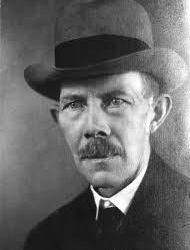
In late 1908, Dr. Gudmundur Hannesson became involved. Hannesson was a professor of medicine at the University of Iceland, an anthropologist, a Reykjavik city councilman, an honorary member of the Icelandic and Danish Association of Physicians, and served as President of the University of Iceland for two terms. This was no woo-woo guy and he was determined to debunk Indridi’s exhibitions, which were causing uproars in the press (Indridason had become the most famous person in Iceland).
Hannesson witnessed the near full array of Indridason’s talents—apart from levitation, which occurred a few times but in darkness. To confound the possibility of Indridi or an accomplice moving objects outside the mesh barrier, he placed newfangled glow-in-the-dark tape on the musical instruments and objects about the room. He saw a zither fly about high as the ceiling and dart at incredible speeds as it played snatches of tunes whose acoustics followed the location of the instrument at every second. He heard two disembodied voices, an accomplished female singer and a low male voice sing a duet in harmony, separated in space by eight to ten feet from one another in the hall with only five people (and no women) present at the seance. Many separate voices had been already witnessed in the surrounding space of the hall by hundreds of seance-goers over the years. With this personal witness Hannesson completely ruled out ventriloquism, which was a consistent charge leveled against the medium by skeptics (nearly all of whom had never attended one of Indridi’s seances).
While the Wiki summary of his career is unusually detailed and even-handed, all of the further “rational criticism” is just opinions at second and third hand and beyond, mostly from the contemporary Icelandic press (who were incredibly hostile towards him for religious reasons) with not a single eyewitness account in the lot. The remainder are tired pseudoskeptical takes on what possibly could have accounted for the events: the usual ventriloquism, conjuring tricks, confidence schemes amongst his assistants. This is utterly disingenuous, for the firsthand witnesses and Indridi’s assistants were of high standing. A quote by an Antonio da Silva Mello claims the sittings weren’t “scientific.” For this, as mentioned above, Indridason was the first trance medium in Iceland’s history; the country had no formal “parapsychology labs,” nor were they aware of the SPR’s protocols for testing mediums. In any case, Dr. Hannesson’s strict settings for testing Indridason were very close to those used by the SPR: Indridi was physically restrained and isolated by thick mesh netting from the areas where the majority of the PK activity took place. The experimental house was thoroughly examined three times before each seance and one successful seance took place at Dr. Hannesson’s own house in a room he chose at the last moment.
EPISTEMOLOGY
The psi of the laboratory and psi of the medium are obviously of different character. Lab telepathy has been shown to exist but is weak-to-moderate in effect…But quantifying the likelihood of someone like Mrs Piper correctly guessingthousands of items about the sitters present before her, or about the proxy sitters substituting for them, and evidential facts about the deceased surely beats the lab numbers by several orders of magnitude beyond chance.
In short, telepathy, superpsi, and survival communication are three entirely different things, although the mechanism by which they utilize the brain may be similar or even the same, as elusive as it presently is.
By the 1930s, the medium of information delivery for the existence of psi largely changed from individual case studies to laboratory reports—and that wasn’t enough for the mainstream scientists to pick up the ball. Even design protocols for psi experiments that would garner little to no criticism if new pharma drugs were their subject are claimed by pseudoskeptics to be compromised by “file drawer problems,” “selective reporting,” and “confirmation biases.”
These are bullshit wavings-away of evidence. Facts are adduced indirectly in science all the time, and their existence is assumed to hold until more firm evidence backs up the experimental assays. And this is certainly the case with forms of psi. It has been indirectly proven; that is, what is displayed in thousands of lab experiments, after all confounding factors are eliminated, calls for the most parsimonious explanation: that a form of anomalous cognition that entirely bypasses the physical senses exists. This may be called evidence type 2.
Debunkers ask for direct evidence (evidence type 1, as is displayed by a physics or chemistry experiment) and think poorly of non-supportive of indirect evidence (evidence 2). I suppose the only acceptable direct evidence is…well, as I’ve pointed out above, the pseudoskeptics have consistently moved the goalpost for at least a century and a half, so I suppose we can’t expect there can’t be any in the near future.
The Wikipedia entry on telepathy leads off with this:
“There is no convincing evidence that telepathy exists, and the topic is generally considered by the scientific community to be pseudoscience.” (emphasis added).
The first clause is patently false, and the second is true—yet are any of those outlier members of the “scientific community” who don’t consider it pseudoscience mentioned in the ensuing article, much less given an airing of why or how they consider it possible? No.
Then there’s this curious statement: “Psychical researcher Eric Dingwall criticized SPR founding members Frederic W. H. Myers and William F. Barrett for trying to ‘prove’ telepathy rather than objectively analyze whether or not it existed.”
Now, doesn’t the phrase “trying to ‘prove’ telepathy” semantically equate with demonstrating it exists? That’s some bad equivocation there. How can “objective analysis” occur without instances showing strong correlation or uncorrelation between the states and contents of two minds?
And the insistence on “objective” analysis is disingenuous. The onus is on the stub writer to outline what would constitute such analysis; no doubt some form of instrumentation would be involved, and not the exacting experimental conditions used by J.B. Rhine, Helmut Schmidt, Robert Jahn and Brenda Dunne, and Daryl Bem.
The “Scientific Reception” subheading kicks off with there is “no scientific evidence that it exists,” without elaboration. Does this mean there have never been results in any methodologically solid telepathy experiment that are statistically beyond chance? This raises the nagging question: roughly (or exactly) how many demonstrations of beyond-chance anomalous cognition would it take for the scientific community to recognize telepathy as real?Just as the soundness of a theory depends on the non-falsification of projected effects of that theory, to my knowledge no scientist has come forward to explain what exactly the conditions for accepting telepathy as real would be.
Anyway, here’s part of the first footnote supporting this blanket statement:
“One reason for this difference between the scientist and the non-scientist is that the former relies on his own experiences and anecdotal reports of psi phenomena, whereas the scientist at least officially requires replicable results from well controlled experiments to believe in such phenomena—results which according to the prevailing view among scientists, do not exist.”
Apart from there being some error in the quote’s construction (former should read latter), it nicely smooths over all the complexities and problems that real telepathy investigators have encountered in the lab.
For one, it’s rare that telepathy can be induced on demand in lab settings. But apparently on demand is a part of the debunkers’ definition, and this shows ignorance of what has been observed of the phenomenon. Their conception, apparently, is a garbled fantasy version of telepathy that has been internalized and projected from fictional depictions.
Two, it’s been found that a researcher’s lack of attention while setting up a comfortable lab situation, and even the experiment design, can actually inhibit demonstrations of telepathy.
Three, in many instances, telepathy has strongly occurred during life-threatening situations in which the purported “sender” is in physical or extreme emotional trouble and the “receiver” in a relaxed or abstracted state of mind. Experiments that have simulated threats to the “sending” party have shown results.[18]
Four, results beyond chance have been demonstrated in the lab in experiments whose design and assays are beyond reproach.
The “thought reading” section in the telepathy wiki is completely irrelevant. It’s composed of two examples, and both are claimed to be the result of readings of ideomotor bodily cues by stage magicians. “Cold” and “hot” readings have nothing to do with real, spontaneous telepathy, as anyone who has steeped themselves in the 150-years of psychic literature can tell you…Again, like depictions in paranormal fiction, the wiki writer-editors’ conception of telepathy is entirely modeled on images that merely ape the real thing, in this case what stage magicians can do, and it is apparent the wiki writers either have no familiarity with the real-world conditions under which it occurs. Either that, or they are being disingenuous or dishonest.
Debunkers and skeptics alike are ever ready to point out the “file drawer effect” when evaluating the results of psi experiments—but a better example of it contra telepathy can’t be found than the contents of the “case studies” section; this stub is itself victim of file drawer effect. It’s risible: Four instances of admitted frauds, two instances of discovered fraud, three examples of tests with “negative results,” and explanations such as hyperaesthesia (acute hearing on the part of the “receiver”) and coincidence to explain the rest. Louisa and J.B. Rhine’s many thousands of trial runs with Zener cards showing above-chance levels are waved away as the result of “sensory leakage,” meaning conscious or unconscious fraud.[19] The academically published experiments of the SRI remote viewers 1974-1996, Robert Jahn and Brenda Dunne at Princeton, Helmut Schmidt, Dean Radin, and Daryl Bem—all which showed positive results—are not mentioned in the wiki. Nor is psi researchers’ rebuttals to the above “explanations.”
The Ganzfeld section actually contains a detailed description of only one side of the debate between Charles Honorton and Ray Hyman to determine whether telepathy was shown during a series of tests; of course, it is Hyman’s attempts to debunk the meta-analyses conducted by the both of them that is highlighted. Honorton’s rebuttals are nowhere to be found. Conveniently unmentioned is the fact that Hyman and Honorton jointly wrote a statementafter years of sparring that concedes that, even were their file drawer effects and some of the studies were ruled out, the results in favor of telepathic demonstration were still above chance and there was no credible alterative explanation. Here’s an excerpt from that statement on the Psi Encyclopedia website:
‘There is an overall significant effect that cannot be reasonably explained by selective reporting or multiple analysis. We continue to differ over the degree to which the effect constitutes evidence for psi, but we agree the final version awaits the outcome of future experiments conducted by a broader range of investigators and according to more stringent standards.’
We may conduct further psi trials and gather more experimental material supporting the previous conclusions that telepathy, remote viewing, precognition, and retrocognition exist. The pseudoskeptic asserts these phenomena are impossible; the other side maintains not only that they are possible but do happen. Both views depend upon axioms what is possible and probable about the world—but one advocate’s position is open-descriptive (the “believers,” neutrals, and true skeptics), and the others’ is closed-prescriptive (the debunkers’). This means the former’s views are open to be refuted by evidence, the latter’s impossible to be refuted due to a priori assumptions about the world.
The axioms of cause and effect are at the heart of the dispute. Here is Mary Barrington’s precis of how a believer might characterize a reality in which the anomalous occurs:
The one overriding law that unifies is normal and paranormal under one system is the law of probability.
Probability is the default mode of the observable cosmos.
What is the relationship between information (something anomalous, say) and its
probability?
Mechanistic sequentiality, the default mode, is the usual way in which successive events unfold, indeed, so usual as to seem universal and inevitable. But it is not either. It is just very, very probable, almost certain—almost.
So while sequential causality is nearly universal, it is not inevitable because while a law of nature (probability) is absolute, a directive (sequential causality) can be overridden. If the basic law is probability, then while most events will be highly probable—normal—a few will be highly improbable, and the more improbable the event, the less rigorous will be its relationship with causality. A manifestly paranormal event is one that occurs at this extreme end of the probability curve, a curve that drops from a very high point close to certainty and plunges down to trail off in a very long tail.[20] (emphasis added)
When one considers that the quantum world as we currently understand it operates entirely by probability, why is so difficult to conceive that the macroscopic world may operate using the same default mode and its occasional outlier, as she suggests? For debunkers, this may is a never.
The information collected through public surveys or questionnaires/solicitations, such as that of the SPR, Alister Hardy’s studies on spiritual experiences, Kenneth Ring’s studies of Near-Death Experiences, is usually quite voluminous. The original SPR’s investigations resulted in two massive books of anecdotes and analysis. Its members were able to contact the persons they solicited in public queries and verify the details of their paranormal accounts as well as gather character references on the witnesses. The sheer number of these accounts cannot be dismissed. There is always the temptation to ascribe to them the neuropathological turn or some other variants of explaining-away by means of physicalism: hallucinations, seizures, temporal lobe transients, etc. But contemporary narratives of NDEs or encounters with deceased relatives and “spirits” and “aliens” tally with James McClenon’s studies of the concrete and universal yet extraordinary experiences of people that he ties to the origins of religions.[21] Thus does physicalism belittle and seek to erase some of the most meaningful human experiences.
Tens of millions of firsthand accounts of extraordinary spiritual phenomena cannot simply be brushed aside. It’s no secret that editor-fact wars have been going on for years in hundreds of Wikipedia entries since its inception. Some involve famous persons (George W. Bush) and some less so famous (Rupert Sheldrake).[22] There are only a handful of Internet articles criticizing the Guerrilla Skeptics’ takeover of the “paranormal” subject entries, and one book by Craig Weiler, so I’ve joined a small chorus.
But the fact that, like clockwork, founder Jimmy Wales begs for dollars on every Wikipedia page to keep it going despite solvency can only be a good thing. Personally, I would contribute to keep Wikipedia going—but only if there were a way of sending a direct email to a complaints department about its one-sided treatment of psi topics and addressing their toleration of a small groups’ takeover of an entire subject. But of course there is no complaints department, because it’s a deliberate anarchive. Consider this blog posting my rebuttal, and some words towards addressing Wikipedia’s absence of integrity.
—————————
[1] Until 2006, it was called CSICOP, Committee for the Investigation of Claims of the Paranormal.
[2] CSI doesn’t do scientific experiments debunking paranormal phenomena—because in their early years they tried and failed. Back in 1975, a group of CSI debunkers attempted to provide an “objective way for unambiguous corroboration or disconfirmation” of a study showing an unusually high number of exceptional European athletes had been born during the planet Mars’s rising or transiting (the “Mars effect”). The effect itself had been noted by a pair of French skeptics trying to disprove astrological influence. The French study had shown that 22% of these athletes had been born during these periods when a 17% chance rate should be expected. The sample size was 2,088, so the odds against this being chance were millions to one. CSI challenged the French duo to do a control experiment: find an additional data pool of random people and determine if they had been born during the same short periods, expecting the random non-athlete group to be distributed at the same 22%. Two years later (!) CSI released their analysis of the report. The results weren’t as predicted; the non-athletes were born 17% of the time during those intervals, as chance predicts. Instead of accepting a possible Mars effect, the debunkers instead chose to criticize the original French study by breaking down the raw data into categories and eliminating sets of athletes (female athletes, by geographical locales, etc.) to dilute the numbers and lower the 22% figure.
CSI astronomer Dennis Rawlins resigned the organization in protest of the disingenuous methodology. He revealed in 1981 that when the analysis of the new data went south, CSI founder Kurtz, statistician Paul Zelin, and astronomer George Abell stonewalled (hence the publication delay from receiving the data from the new challenge) and decided to try to dilute the original French statistics instead. Rawlins’s appeals and alerts to his fellow debunkers such as Randi, Gardner, and Philip Klass fell on deaf ears; they had no interest in supporting the truth. An independent investigation found that Rawlins’s belief in the French team’s sound method and analysis of the original data, the new data, and their conclusion, were all justified. A group of genuinely skeptical scientists within CSI resigned as a result of the attempted fudging—and coverup. In short, CSI demonstrated it was no good at disinterested science, and consequently swore off formally investigating any paranormal claims to this day. See Carter, Chris. Science and Psychic Phenomena: The Fall of the House of Skeptics, Inner Traditions, 2012, pgs. 28-37.
[3] Here’s an article demonstrating a variation of this practice of circular source attribution (the Wikipedia problem of ‘citogenesis’) but in the context of pharma claims that utilize corporate-sponsored studies that in turn cite Wikipedia for supporting evidence.
[4] Hint: If one needs instruction in how to debunk something (since you’ve become a cub atheist or newly minted woo-killer) maybe you’ve already got a problem with understanding logic and critical thinking/rhetorical skills and need to take a step back from your new obsession…Why do both debunkers and open-minded persons like myself get so angry at each other? I admit that my blood pressure jumps whenever I encounter an evidence-free yet arrogant dismissal of any “paranormal” event by some message board junior master of the universe who’s just discovered atheism and SCIENCEã. Some of us “psi defenders” are just as emotionally volatile as religious fundamentalists when it comes these matters. An impassive, intelligent observer might think that both camps are defending unfalsifiable theses—and this may be true, not just because we weren’t present to witness these things firsthand, but because metaphysical positions are involved in how we characterize these events, whether we want to admit it or not. Most debunkers, however, think metaphysics is bunk to begin with, and will deny that they operate from any fundamental “axioms” other than those the hard sciences such as “normal physics” provide.
[5] The tiresome CSICOP stage magician Joe Nickell, who inevitably gets more citations in the Enfield Wiki entry than anyone else, “examined the reports” and concluded the girls in the case must have been using ventriloquism. He offers no evidence for this assertion.
[6] See their book Poltergeists, White Crow Books, 2018, pgs. 330-37.
[7] See Heywood, Rosalind. The Sixth Sense, Chatto and Windus Ltd., 1959, pgs. 112-127; Beloff, John. Parapsychology: A Concise History, pgs. 120-24; Haynes, Renee. The Society for Psychical Research 1882-1982: A History, McDonald & Co. Ltd., 1982, pgs. 83-88; Carter, Chris. Science and the Afterlife Experience, Inner Traditions, 2012, pgs. 145-50, 151-53, 166-69, 177-78, 183-85.
[8] What personal psychology leads one to become a stage magician in the first place? There are many within the field of pseudoskeptics, and this has held from the 19th century beginnings of psychical research. But prevarication can work both ways: misdirection can be used upon the skeptic and “believer” alike. The psychological tactic behind debunking is similar to a stage trick, and simple: generally, one should direct the reader’s attention to the frauds or “rationally amenable” fraudulent techniques that have been used in different instances than that which is the subject of the article, and apply them as the only possible explanation. Direct the reader’s attention away from their immediate experience that something anomalous may have happened. This skews the mind’s repertoire of activities from the holistically perceptive right hemisphere to the “part-focused,” linear, and logic-oriented left. See Iain McGilchrist’s The Master and His Emissary: The Divided Brain and the Making of the Western World, Yale University Press, 2012, pgs.
[9] Tymn, Michael. Resurrecting Leonora Piper: How Science Discovered the Afterlife, White Crow Books, 2013. 65-71.
[10] Blum, Deborah. Ghost Hunters: William James and the Search for Scientific Proof of Life After Death, The Penguin Press, 2006. Pgs. 165-67; Tymn (2013), pgs. 41-44.
[11] https://en.wikipedia.org/wiki/Leonora_Piper
[12] Blum, 2006. pg 311.
[13] Haraldsson, Erlendur and Gissurarson, Loftur R., Indridi Indridason: The Icelandic Physical Medium, White Crow Books, 2015, pgs. 2, 7-9.
[14] Ibid, pg. 8.
[15] Ibid, pgs. 3, 12, 22.
[16] Ibid, pgs. 29-34.
[17] Ibid, pgs. 32-46.
[18] See the works of Guy Lyon Playfair: Twin Telepathy; If this Be Magic; and The Indefinite Boundary.
[19] The linked wiki entry on “sensory leakage” helpfully informs us, “Due to the methodological problems, parapsychologists no longer utilize card-guessing studies.” It doesn’t follow up with any kind of description of what replaced the Zener cards, such as the autoganzfeld test with randomized images generated by computer, and the fact that the senders and receivers may be in soundproofed rooms or even a thousand miles away from each other and still often show statistically significant results.
[20] Barrington, Mary Rose. JOTT: when things disappear…and come back or relocate–and why it really happens, Anomalist Books, 2018.
[21] McClenon, James. Wondrous Events: Foundations of Religious Belief, University of Pennsylvania Press, 1994; Wondrous Healing: Shamanism, Human Evolution, and the Origin of Religion, Northern Illinois University Press, 2001; The Entity Letters: A Sociologist on the Trail of a Supernatural Mystery, Anomalist Books, 2018.
[22] See this also on the Guerilla Skeptics’ attack on Sheldrake.
Wikipedia’s Anti-Psi Mafia & the Revenge of the Damned Most of the online population window-shops Wikipedia for their information, but if you happen to be interested in psi (or any anomalous phenomena), its accounting of facts and history can be outrageously selective revisionism.
#CSI#CSICOP#Culture#Guerilla Skeptics#history#parapsychology#philosophy#pseudoskeptics#psi#psychology#religion#science#skepticism#Wikipedia
2 notes
·
View notes
Text
The Paranormal and Skepticism - as Discussed in Steve Volk’s “Fringeology”
I have sat and thought, since uploading my introduction post, about where I would even start. There's so much to touch on that I almost didn't want to approach it at all, but it only makes sense to start with a more general post. I want to start with the topic of “the paranormal” and the acceptance of such phenomena (in the sphere of this book, at least, considering the vastness of the topic). “Fringeology” was written and published in 2011 by Steve Volk, a writer with enough humility to subtitle his book, “How I tried to explain away the unexplainable and couldn’t.” He makes a good argument for the reasons why people can’t accept an opposing view to their own, and to put it plainly: why it’s really not so crazy to accept that paranormal phenomena exists, scientifically or otherwise (along with tons of other concepts to expand on separately). To begin, he offers a few quick examples of the connections between the paranormal, science and history- alchemy has led to modern chemistry, as Francis Aston used predictions from occultists to discover the isotope. Hans Berger invented the EEG originally wanting a mechanism for measuring psychic events. Plato told the story of Er, a soldier who died in battle, experienced the afterlife, and was revived days later, and President Lincoln dreamt/predicted his own death. Although these are just a few examples, they serve the argument that paranormal phenomena is present in situations, lives and even myths seemingly important enough for us to want to expand on. “…Taking the paranormal seriously means we gain a greater understanding of the world regardless of the outcome.”[1] An example of this would be the NDE: the Near Death Experience. It is a phenomenon that has been heavily associated with the paranormal, but is now a topic studied in our modern medical and psychological science. On the other end of the spectrum are committees and individuals dedicated solely to disproving paranormal and psychic phenomena. Volk mentions this one above all: CSICOP (The Committee for the Scientific Investigation of Claims of the Paranormal), founded by humanist philosopher Paul Kurtz in 1976, a committee Volk pegs as the foundation for the modern skeptical movement. However, they voted to discontinue further scientific investigations after the Mars Effect study (conducted by Michel and Francoise Gauquelin, proving that extremely talented athletes and sports champions were found to have Mars “around the Ascendant and Midheaven in their birth chart more frequently than chance would allow.”[2]). In fact, according to Volk, CSICOP changed their name in 2006 to CSI (Committee for Skeptical Inquiry), so they no longer had to have the scientific method in question, which I find interesting and ironic for a committee with the mantra, “We can’t let the mystics rejoice.” Also mentioned is a good point made by Dr. David Jones, a man who believes that hard, rational thought traces the contours of the problem, not its answer. When you think about it, the main argument by skeptics (of anything, really) is the use of “logic.” As explained by Jones, “Logic is based on society’s current storehouse of accepted knowledge,”[1] which changes constantly. even though it’s an argument used all the time, the most obvious example of this is that “logically,” at one point, the whole world also agreed that the earth was flat. Specifics aside, I like the simple summary it ultimately comes to with Volk, which is basically that if “paranormal” refers to what is unexplained, then reality itself is paranormal. “The mystery of the world exists apart from our judgment of it.”[1] If you want to hang on to the concept of “logic,” even Volk elaborates on the fact that our version of logic does not equate to what is true, by explaining that our brain isn’t built to give us a true and accurate perception of reality. There is too much stimuli to assess, so the brain creates a model of the world that allows us to survive, comfortably so. It brings the “important” things to the forefront and suppresses anything else (like the paranormal, perhaps?), even though the image that this creates is wrong.
In fact, skeptics are so dedicated to disproving, that a popular tool used are psychological evaluations (the go-to explanation: if you believe, something is “wrong with you”). From what I’ve seen, they popularly come in the format of a questionnaire, one of the most famous being the Fantasy Prone Personality (FPP) test, proposed by Sheryl Wilson and Theodore Barber in 1981, “the debunker’s dream.” Fantasy Prone people are more likely to believe in something mainstream science rejects, and answering yes to 6 or more questions automatically makes you Fantasy Prone. With this logic, having one paranormal experience in your whole life can result in a 6+ “yes” response. Despite that being a main problem, Volk also mentions that your belief in your experiences aren’t always concrete- sometimes we have more vivid belief in certain things depending on what is happening in our lives at the very moment. Another famous psych-based test would be the Magical Ideation Scale, meant for “irrational thinking.” Apparently, people with confirming answers to a certain amount of the provided statements are more likely to develop a schizophrenia spectrum disorder, and people that are considered to have an “FPP” are more likely to have experienced childhood trauma. Although this is not unlikely, skeptics use these tools to prove that anyone with a sort of paranormal belief have them simply due to mental illness and trauma. From what I remember, Volk does not mention the condescending nature of these tests, but it’s something I noticed almost immediately. Imagine having to take one of these questionnaires given to you by your psychologist because you’ve discussed experiencing something paranormal, and the first thing you hear is that the test is to measure irrationality. This is just one of the many, many examples of reasons why experiencers have not and will not come forward. There is a sort of obsession with needing to be what we consider “logical” and “rational,” however, “Prosaic explanations aren’t always available - that is, unless we allow our commitment to the rational to make us downright irrational.”[1]
In an interview with Steve Volk given by Greg Newkirk (paranormal investigator and co-creator of the docu-series “Hellier”) on a temporarily posted live stream, Greg proposes that there should be a sort of Magical Ideation Scale for nonbelievers. Volk replies with nothing other than, “Absolutely.”[3] As i look back in my notes regarding his book, I realized that this idea was actually mentioned- Volk asks the question of why there aren’t comparative studies on “sane belief” and why people hold those opinions, and includes the viewpoint of skeptic Chris French, who believes there probably is a scale for nonbelievers, but being at the hard end of the skeptic spectrum is due to just being born not open to believing. According to Volk, French is a committed skeptic but believes we should continue to learn and revise our beliefs as we do so. Another interesting comment Newkirk has made in the past regarding the book was about the aforementioned perception of logic. Volk credits Edward de Bono as an “expert of creative thought” who argues that the West’s tradition of settling disagreements by argument is “over-reliance on logic”[1], while logic is more of a partner to free, associative thinking. Simplified by Newkirk, “The ‘wacky stuff’ is just a way of looking at the world differently,”[4] and in Volk’s eyes, “…What is today seen as wacky often leads to tomorrow’s progress.”[1] Volk isn’t afraid of being ignored or discredited due to the “wacky stuff”- in the Newkirk/Volk interview, Greg asks how skeptics have responded to “Fringeology.” Steve replies quick-wittedly, “They didn’t read it and hate it.”[3]
I wanted to explore the viewpoint of Volk and some of his examples regarding the paranormal generally, as I find it may be easier to begin with a sort of overview when discussing certain works and writers in this community- Nearly all of them have specific differentiating details regarding their own theories. I think it’s important that writers such as Volk explore the world of skepticism, as it is an obscure way of thinking in itself.
“The truth is, we don’t have to treat the paranormal the way we do. We don’t need to bathe in it with the believers, or strenuously deny its existence, like the skeptics. And we don’t need to turn the whole thing into a fight.”[1]
[1] Steve Volk, “Fringeology”
[2] The Astrology Podcast Episode 173 Outline
[3] Greg Newkirk live stream interview with Steve Volk for Patreon members (no longer available), 7/19/20
[4] Greg Newkirk live stream book club discussion of “Fringeology” chapters 1-4��
#posts#fringeology#stevevolk#paranormalphenomena#theparanormal#history#alchemy#nde#psychicphenomena#csicop#paulkurtz#modernskepticalmovement#marseffect#drdavidjones#logic#fpp#magicalideationscale#schizophrenia#irrationality#modernscience
0 notes
Photo

Joe Nickell, Senior Research Fellow for CSICOP, creates an “Alien Timeline” which highlights everything from the “flying saucer craze,” cases like the Betty and Barney Hill Abduction all the way to modern conception of aliens.
Really cool chart!
4K notes
·
View notes
Text
UFO Sightings - Alien Timeline

Joe Nickell, Senior Research Fellow for CSICOP, creates an “Alien Timeline” which highlights everything from the “flying saucer craze,” cases like the Betty and Barney Hill Abduction all the way to modern conception of aliens.
25 notes
·
View notes
Text
The Devil in the Details: Anton LaVey, Pseudoscience, and CSICOP
In his latest article for Skeptical Inquirer, JD Sword explores Anton LaVey’s contributions to skepticism and paranormal investigation. Follow this link to read the article.

View On WordPress
#anton szandor lavey#CSICOP#ghost busting#JD Sword#paranormal investigation#pseudoscience#Skeptical Inquirer#skepticism
8 notes
·
View notes
Video
youtube
Stanley Krippner, Ph.D., professor of psychology at Saybrook University, is a Fellow in five APA divisions, and past-president of two divisions (30 and 32). Formerly, he was director of the Maimonides Medical Center Dream Research Laboratory, in Brooklyn NY. He is co-author of Dream Telepathy, Extraordinary Dreams and How to Work with Them, The Mythic Path, and Haunted by Combat: Understanding PTSD in War Veterans, and co-editor of Debating Psychic Experience: Human Potential or Human Illusion, Healing Tales, Healing Stories, Varieties of Anomalous Experience: Examining the Scientific Evidence, Advances in Parapsychological Research and many other books. He is a Fellow of the Society for the Scientific Study of Religion, and has published cross-cultural studies on spiritual content in dreams.
Here he describes his complex relationship with individuals he terms “scoffers” of parapsychology. Some of these individuals have labeled him a “charlatan” and have also consistently misrepresented the details of his own research – even after having been repeatedly corrected. However, on other occasions he has developed good working relationships with skeptics – many of whom contributed chapters to his anthology on Debating Psychic Experiences. Krippner goes into some detail describing his experiences with the magician James Randi and his “Project Alpha”.
New Thinking Allowed host, Jeffrey Mishlove, PhD, is author of The Roots of Consciousness, Psi Development Systems, and The PK Man. Between 1986 and 2002 he hosted and co-produced the original Thinking Allowed public television series. He is the recipient of the only doctoral diploma in "parapsychology" ever awarded by an accredited university (University of California, Berkeley, 1980).
(Recorded on May 12, 2016)
0 notes
Text
The Unethical Skeptic
So, in my searches, I came across a fake skepticism site called The Ethical Skeptic. The original article I found was “Carl Sagan was wrong.” It claimed Carl Sagan’s Baloney Detection Kit (BDK) is misused by false (warning sign) skeptics to enact “denial, ignorance and application of ‘skepticism’ outside the context of neutrality and sincere investigation” and the BDK is flat out incorrect. Hhhmmmm.... Now, this isn’t the first critique of Carl Sagan’s BDK, but nothing as strong as this.
The next paragraph starts, “I am a Carl Sagan fan, don’t get me wrong.” This statement is to disarm you from anything that might prevent you from critically examining his writing, thus giving him a chance to state his case with an “open mind.” Not unreasonable, but you have to understand - in the words of Admiral Ackbar - “It’s a trap!” Marc Anthony used the same trick to incite the people against the conspirators who killed Caesar in William Shakespeare’s play Julius Caesar. The people, if memory serves, hate Cesar, and Marc Anthony’s words, “I cam to bury Caesar, not praise him,” uses rhetoric to disarm the people, because they fully expect him to defend Caesar. Marc then goes on to do exactly what he claims he’s not doing, as well as use sarcasm to describe Brutus and the conspirators by calling them “honourable men.” It’s designed to disarm what you expect, and manipulate your emotions with the use of rhetoric.
As I perused the site, thinking initially that it might someone who misunderstood Sagan’s BDK, or was seeking to bolster the methods espoused by Sagan. How wrong I was. It’s a feel good site designed to use passive-aggressive means and logical fallacies to fool you into accepting it’s apparent reasonableness.
Example 1:
The False Skeptic
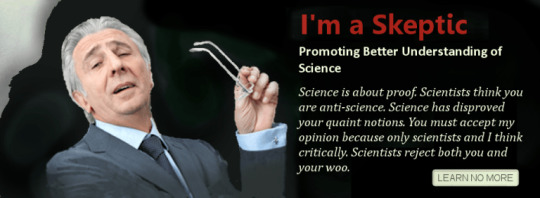
The “false” skeptic is the “No True Scotsman” fallacy. “I am an ‘ethical’ skeptic, and all others who disagree with me are ‘false.’” Ethical skeptics are “open minded.” This means not rejecting what the site’s message, which a reasonable and ethical skeptic would not. You are a reasonable and ethical skeptic. Are you not?
Just like my daughter says when I ask her why she doesn’t believe me when I lie, “Because your lying.”
Other things are
wholesale dismissal of what isn’t ethical skepticism, “... the poseur habits of appeal to authority masquerade and insistence on abductive/panductive inference..” (WTF?)
Quote actually used: “Whenever you have someone who is a professional skeptic, you should be suspicious of them” ~ Deepak Chopra” Anyone sourcing Deepak Chopra as a means of determining skepticism should be immediately suspect. There is nothing positive that Deepak Chopra can say that can’t be said by reliable skeptics and other trustworthy sources.
Ethical Skepticism considers anything else to be an “abuse of Cartesian Doubt as a racket of a priori simplistic predictive based knowledge, self delusion, and Methodical Cynicism.”
Anything but “Ethical Skepticism” is propaganda.

But I feel at a certain point that I’m entirely correct that this is a No True Scotsman Fallacy. The one claiming that someone else is not a “True” Scotsman (skeptic) should actually be a Scotsman himself, not a straw man.
Example 2:

Open mindedness. This was an issue early on in CSICOP (predecessor to SCI). Marcello Truzzi felt that the members should be “open” to all things. This is good on the face of it, but presents a problem. At what point do you “close” the mind? If you set out to test something, say cold fusion, and you can’t, do you immediately say cold fusion cannot exist. The evidence points this way. But if you say the technology doesn’t exist to prove it, are you being unrealistic, or a “true skeptic.” If you conduct 10 test, and they’re all negative, do you stop? 50? 100? 1,000? Do you keep testing until you prove it’s real? We cannot say with 100% certainty that cold fusion isn’t possible, but it defies the known laws of physics. Cold fusion as claimed today in its various mutations does not exist. We may eventually be technologically advanced enough someday to do it. Until then it’s, at best, a proposition. If you can’t prove something, do you try and try again. If a man is on trial for murder, do we try him repeatedly until he’s found guilty? He might be guilty, but the evidence just isn’t there.
In Marcello Truzzi’s opinion, the psychic phenomenon (the occult and paranormal) was real, and if investigated enough, would eventually prove that it was real. His problem was:
He believed it to begin with, or wanted it to be real
Considered himself “the skeptic’s skeptic,” and all other to be pseudoskeptics.
Open mindedness is about being receptive to new things. But skepticism is about following the evidence. Some things are shut until an extraordinary claim is proven with extraordinary evidence. Not wishful thinking, not “trust me,” and certainly not about researching something to death, even though it’s failed thousands of times before.
Example 3:

Emotion. We are creatures of emotion. They have places in our life, but they shouldn’t control our lives. There is the Appeal to Emotion. Ethical Skepticism focuses on value, i.e. “love, understanding and alleviating suffering.”
Example 4:
A misunderstanding of Skepticism

The site claims that “social skeptics” bypass science, and is a priori thinking. That doubt, belief, ignorance of risk, and “social pressure to accede to stacked provisional knowledge” are all to be suspended. In other words, accept what I say. Even as the site denigrates dogma.
It even quotes Steve Jobs, “Your time is limited, so don’t waste it living someone else’s life. Don’t be trapped by dogma – which is living with the results of other people’s thinking. Stay hungry. Stay foolish.” Yes, the Steve Jobs, who tried to become a Buddhist monk, that rejected medical science and relied on woo for too long to cure his pancreatic cancer. He regretted his decision. Steve Jobs is also seen by some as a tyrant and manipulator. I won’t speak to these claims, but it is interesting to juxtapose that statement with the man’s behavior.
If you made it this far, congratulations, and thanks.
So the “Ethical”
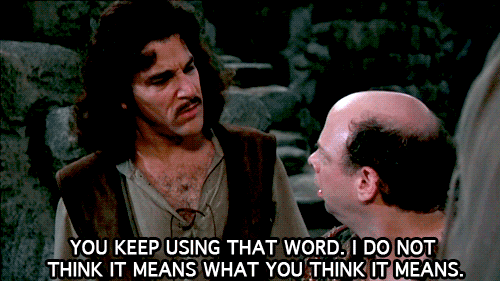
“Skeptic”

is really anything but either, just a self-righteous hypocrite promoting uncritical acceptance. The site is disingenuous bullshit wrapped in a facade of reasonableness, sprinkled with actual skepticism to give it an air of sincerity and packaged in passive-aggression to deliver you from the likes of those who would “rejects both you and your woo.”
The whole purpose of the site is not to promote skepticism or science, but to use skepticism against itself and fool people, and give them a reason to deny anyone who questions the woo (it even gives examples), and steer people away from critical thinking.
In short it is fake skepticism.
1 note
·
View note
Text
In science it often happens that scientists say, 'You know that's a really good argument; my position is mistaken,' and then they would actually change their minds and you never hear that old view from them again. They really do it. It doesn't happen as often as it should, because scientists are human and change is sometimes painful. But it happens every day. I cannot recall the last time something like that happened in politics or religion.
Carl Sagan, Keynote address at CSICOP conference in 1987
1 note
·
View note
Link
https://4.bp.blogspot.com/-8ZRfde9GsbA/W7zVJk_YrSI/AAAAAAAAkTw/CJ1SUX_gSbss6YuJa9DHkF5X70HlbL5OgCLcBGAs/s72-c/What%2Bis%2BReally%2BHappening%2Bat%2Bthe%2BSkinwalker%2BRanch.jpg
Hunting the Skinwalker
It was after uncovering some disturbing information about the Skinwalker Ranch owned by Robert Bigelow that I began to have doubts about the real purpose behind the MUFON-BAASS project. Bigelow Aerospace Advanced Space Studies (BAASS) is an aerospace company allegedly involved in discovering novel and cutting edge space technologies and contracted MUFON in 2009 to perform UFO investigations on its behalf. In the following email to the MUFON Board of Directors, I summarized my research findings and my misgivings about any further relationship with BAASS.
By James Carrion 2-8-2011
Note that this email has been modified to remove identifying information about the confidential source here called Brad Newton who is still under a non-disclosure agreement from his work with the now defunct National Institute for Discovery Sciences (NIDS), also an organization founded by Robert Bigelow.
CONFIDENTIAL – DO NOT FORWARD – FOR MUFON BOARD ONLY – HIGHLY SENSITIVE Gentlemen, Since taking on the MUFON International Director position, I have been in observation mode trying to understand the true nature of the UFO phenomenon. In 2007 I personally financed a “meeting of the minds” in Fort Collins to try and gain insight into what the status quo was in Ufology. I have personally investigated high level cases such as Kinross and the California Drones and have found myself on the receiving end of a constant flow of disinformation. What I have observed over the last three years seriously disturbs me. It is my belief that there are forces at work here that “manage” Ufology for their own purposes. When an organization like MUFON starts to operate outside of the box “they” intend to keep us in, then these controlling forces move in to tighten their grip. Case in point is MUFON’s relationship with BAASS. Although John (Schuessler) knows who BAASS’ sponsors are, I am no longer comfortable with the MUFON-BAASS relationship. Let me explain in detail. Just last month, I financed my own trip to Utah with Dr. Frank Salisbury who was looking to republish his book “The Utah UFO Display” and was looking for new material to add. Since the book covered the Uintah Basin in North East Utah where the Bigelow Skinwalker Ranch is located, Salisbury sought and was denied access to the Ranch. I also asked and was denied access. Instead, we spent our time interviewing new witnesses around the Ranch. Our contact person was Brad Newton (real name withheld) who has researched the area for many years. What I learned from Brad is what has led to the doubts I now harbor. Brad worked with NIDS on the ranch and mentioned that after an alleged sighting, metal rods were found on the ranch that were sent to NIDS for analysis. Brad was in contact with a NIDS scientist who informed him that the rods were made from Element 115 and did not originate on earth, and that he (the scientist) had worked at Area 51 on a reverse engineering project where they had accumulated 300 pounds of this material. This in a nutshell is the Bob Lazar story. Through Dr. Salisbury, we were able to interview the brother of the original owner of the ranch who sold it to the Shermans who subsequently sold it to Bigelow. The ranch owner’s brother was adamant that there was no UFO or strange activity on the ranch prior to the Sherman’s purchase, contrary to what was discussed in the Skinwalker Book and that he (the owner’s brother) had personally received a call from Bigelow trying to convince him otherwise. I found this to be extremely odd and disturbing. I also subsequently learned of a business relationship between Lazar and Bigelow (documented in the MUFON archives). What I see in the MUFON-BAASS relationship is active management of MUFON’s work, despite assurances from BAASS otherwise. By carefully controlling the purse strings with each contract evaluation period, they are ensuring they receive a constant flow of information from MUFON while also making sure that MUFON does not end up with operational funding to stabilize its long term financial well being. Who’s on the receiving end of this information? Since that will not be disclosed to MUFON, I cannot state for sure, but I don’t feel confident that the information is being used for what MUFON was originally informed. If you were able to listen to my speech at the Symposium or read my paper in the Proceedings or read my blog, then you know where I stand on the active management and control of information on the part of governmental or quasi governmental forces in our work. Conspiracy theory? Yes. Plausible? Yes. MUFON has an obligation to the public to fulfill its mission. I for one believe that we cannot adequately do so as long as we are actively managed, nor can I in good faith stand by while this is happening. Those are my personal feeling however and as such I don’t want to speak for the organization when making the decision to renew or terminate our contract with BAASS. I leave it to the Board for a decision on this. I have already stated my decision to step down as the International Director, and in large part my decision has been based on my research. I will continue to work within MUFON and for MUFON’s long term viability, but I will not stand by and be managed. My time will be better spent actively uncovering the trail left by the forces of disinformation and my efforts focused on uncovering the truth. In the end that is all that is important. Sincerely, James
John Schuessler responded with the following email:
James, I am concerned for you if you are basing decisions on what Brad has said. It is not my intent to argue the point, but the whole Element 115 thing is pure bunk. Don't take my word for it, just ask any scientist. Both CSICOP scientists and MUFON scientists like Stanton Friedman have thoroughly debunked Lazar's Element 115 story. If you could get Element 115 (or Elements 114 and 116) to be stable enough to make them into rods, they would make extremely heavy rods. I can find no one except Bob Lazar and now Brad that believes there are Element 115 rods anywhere, let alone dumping them out on the ground in an uncontrolled environment on a ranch in Utah. As for the rods found on the Skinwalker Ranch, I was on the NIDS Scientific Advisory Board back in those days and can verify that rods were found. They were not heavy Element 115 rods. Instead, they were thin carbon rods that are used in arc lamps to make very bright lights in field operations. I have personally used this type of rods in arc lamp operations many years ago. John
My email response to John follows:
Hi John, That is my point exactly. Lazar and element 115 are bunk but it appears to me that the NIDS scientist was promoting it to Brad. Why? I found Brad to be honest in his demeanor and he is held in high esteem by everyone we came into contact with including many of the witnesses we interviewed. Brad has no motive for promoting the Bob Lazar story but it was communicated to him nonetheless. Actually, it was the former ranch owner’s brother’s assertions that cemented for me that something is amiss. The Skinwalker ranch story did not play out as described in the book and that coupled with us being denied access does not add up for me. I can only conclude that BAASS is at someone else’s beck and call. The Board does not need to agree with me on this, which is why I am leaving the contract renewal response to the Board. Best wishes, James
It was after this email exchange that the MUFON Board bypassed me as acting MUFON International Director and secretly engaged BAASS in renegotiating the MUFON-BAASS contract while purposely keeping me out of the loop. As you can see from the email exchange, this secretive communication was altogether unnecessary because I deferred to the majority decision of the MUFON Board. Unethical behavior on the part of the MUFON Board aside, the following questions still beg for answers: What is really happening at the Skinwalker Ranch and why are serious investigators being denied access? Why was a NIDS scientist pushing the Bob Lazar story which is a known farce? Why does the book “Hunt for the Skinwalker” describe paranormal activity present on the ranch prior to the Shermans purchasing it when a close surviving relative of the former owner denies such activity? Why is the truth about activities on the ranch being censored through non-disclosure agreements? It appears that once again in Ufology there are more questions than answers; common fare for a field where the waters are muddied but never cleared. If you consider yourself a truth seeker then perhaps it is time to take a stand against these forces of ambiguity that seek only to obscure the truth rather than bring it to light. It is time to promote truth and not mystery in a field that has too many mysteries already. It is time to reveal the truth by not compromising ethics or principles or by allowing truth to be censored. It is time to stop falling prey to fear and lies but instead to hunt the Skinwalker forces of deception in their own territory. Who is up for a hunting trip?
Editor's Note: As most know, James Carrion is the former International Director of MUFON. Given the renewed interest in the Skinwalker Ranch precipitated by Jeremy Corbell's documentary, based on George Knapp and Colm A. Kelleher book of the same name, Hunt for The Skinwalker, we re-present James' article on the ranch and his involvement originally published in 2011-FW
See Also: Army Colonel Reveals Amazing Skinwalker Ranch Stories | VIDEO Alien Ranch Up For Sale Hunt for the Skinwalker & The Defense Intelligence Agency (DIA) Connection Shermans' 480-acre Ranch a Hotbed for UFOs and Bizarre Paranormal Activity
REPORT YOUR UFO EXPERIENCE
Read more »
What is Really Happening at the Skinwalker Ranch? http://www.theufochronicles.com/2018/10/what-is-really-happening-at-skinwalker-ranch.html
0 notes